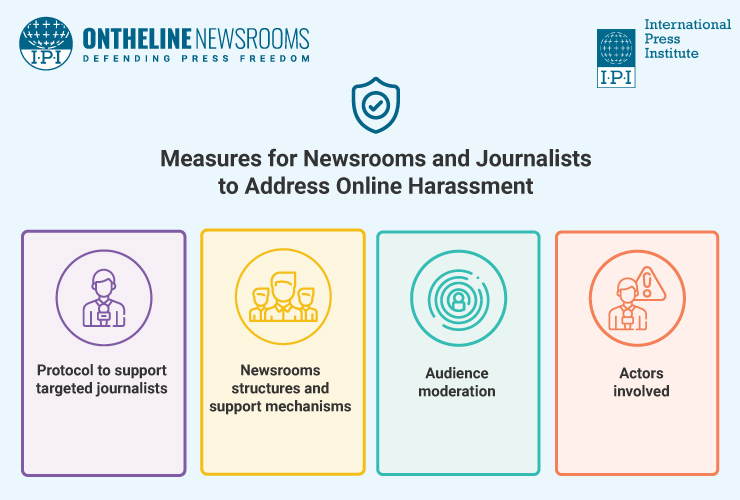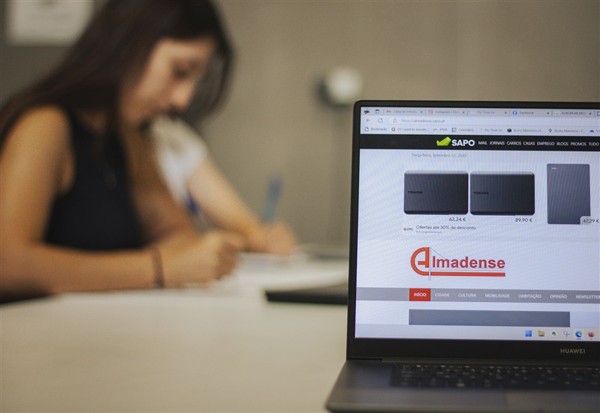A new website launched on July 9 by the International Press Institute (IPI) offers comprehensive resources for newsrooms to combat online harassment against journalists and its effects on press freedom.
Although harassment and abuse of journalists online are growing across the globe, there are few concrete resources available for newsrooms to respond to the dangers this phenomenon harbours for journalists’ well-being and the public’s right to the news. This new platform changes that.
Visit the new resource platform for newsrooms
Part of IPI’s Ontheline project, the website compiles measures and best practices collected through interviews with over 110 editors, journalists and media experts as well as visits to 45 leading newsrooms in Europe, including the BBC, The Guardian, Reuters, German public broadcaster ARD and Spain’s El País. The measures are shared in the form of descriptions, video interviews and links to relevant reports and outside resources.
The website includes measures in four principal areas: pre- and post-moderation for both on-site comments and social media posts; newsroom structures and mechanisms designed to promote a culture of safety around online abuse; protocols for assessing and responding to attacks; and the roles and responsibilities of newsroom actors involved in these areas.
Over the coming months, the platform will be continuously updated to add additional resources and to update best practices to keep up with the changing nature of online abuse.
“In providing these tools, we’re aiming to help counter not only the negative personal and professional impact of online abuse on journalists but also help prevent self-censorship arising from online attacks that threatens the public’s access to the news”, IPI Executive Director Barbara Trionfi explained. “In order to achieve these aims, it is important that journalists who are target of online harassment are not left alone to deal with it. This phenomenon must be acknowledged as a structural problem of the news ecosystem and addressed through dedicated newsroom policies and mechanisms that support both staff and freelancers.”
Online harassment takes a range of forms – from threats of violence to smear campaigns to online trolling – that share a common goal: silencing journalists who cover certain politically or socially contested topics or who express diverse opinions. This aim is achieved by generating fear and self-censorship among journalists or by discrediting them in the public eye, leading to a loss of trust.
Far from being an “industry” problem, online harassment threatens the public’s right to independent news and a pluralistic media environment, both of which are essential for democracy. IPI research has shown that states and other political actors employ online harassment as a weapon against critical journalism by orchestrating attacks and smear campaigns against individual journalists and media houses.
The involvement of a broad range of actors – especially states and tech companies – is needed to tackle a press freedom problem that is of great importance to open and democratic societies. Newsrooms also have a role to play in ensuring the safety of their journalists and these measures can help them effectively do so.
The platform also contains specific resources related to female journalists, a reflection of the fact that female journalists face different types of attacks than their male colleagues. Harassment targeting women tends to be especially vicious, highly sexualized and focused less on professional output than on the journalist herself. The resources on female journalists are being shared in cooperation with the Office of the Representative on Freedom of the Media of the Organization for Security and Co-operation in Europe (OSCE) and its #SOFJO initiative.
Media contact:
IPI Deputy Director Scott Griffen
+43 1 512 90 11 21
[email protected]



